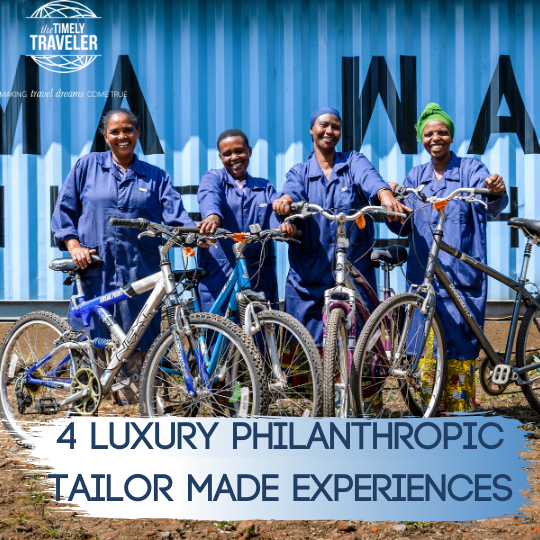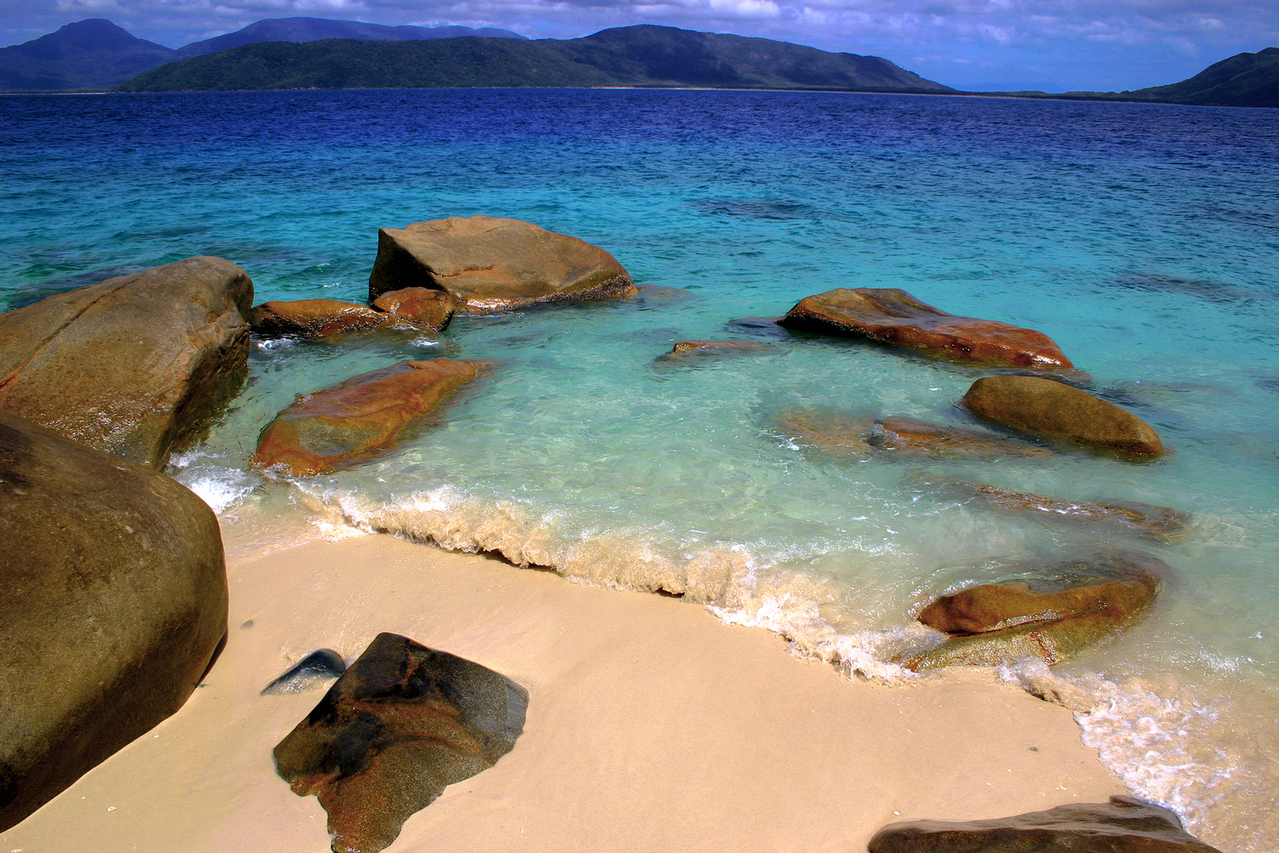9 Day Croatia Discovery Tour – Small Group Croatia (6 – 12 people)
- Croatia with Us from September 21 – 29, 2019
- Visiting: DUBROVNIK – PELJESAC PENINSULA – STON – HVAR – STARI GRAD – SPLIT – OMIS – CETINA RIVER – PLITVICE LAKES – ZAGREB
- Join our 2019 Autumn in Croatia Small Group Tour! It is loaded with stunning scenery, memorable authentic experiences, some great food and wine, fascinating culture and history, and friendly charming Croatia!! This journey offers an opportunity to experience many of the exceptional aspects of local Croatia. There is also time built in for exploration on you own for some of this fantastic destination.
Day 1 – September 21 Dubrovnik

- Dubrovnik is a medieval city on the Croatian side of the Adriatic coastline and treasure trove of cultural, historical monuments that were created throughout its thousand-year existence. In the past, it was a City-Republic, and alongside Venice one of the most famous cultural-economic centers on the Mediterranean. In more recent times, it has become the center of modern cultural and tourist events: a city of summer festivals – an international parade of top musical and theatrical achievements, a city of museums and galleries. These values have turned Dubrovnik into a place that offers a rich selection of various experiences and excitement, but also a complete holiday in a quiet and calming, mild Mediterranean ambiance and wonderful seaside landscapes.
Itinerary:
- Arrival to Dubrovnik and a private transfer to your hotel
- Time at leisure and an overnight in Dubrovnik
- Accommodation in a 5* hotel in Dubrovnik, BB Basis
Day 2 – September 22 Dubrovnik
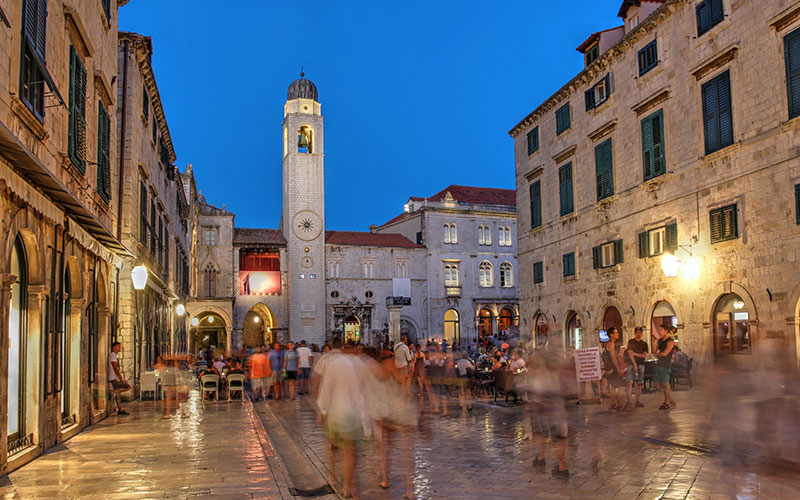
- Stradun – the main street of Dubrovnik where everyone’s walked and also the busiest street where you stroll over marble tiles. Stradun is a great place for everyone where all the shopping can be done, cafes and restaurants are on the streets and many wonderful shops.
- Onofrio’s Fountain – this drinking fountain is located just at the beginning of Stradun, the main street of the old town. The structure was named after its builder, the Italian Onofrio de la Cava, dates from 1440 and includes 16 sides. The concept is part of the water supply system of the city and brings water from the well in Rijeka Dubrovacka, at more than 20 km away, to the heart of the city. Before that this interest was, therefore, more than a masterpiece of architectural sophistication. Originally the fountain was decorated with a sculpture, which was destroyed in the earthquake of 1667, the Remaining 16 stone masks from which the water flows into a lake.
- The Clock Tower was built in the 15th Century right at the other end of the Placa (main thoroughfare) and represented alongside nearby buildings a free city-state. The tower is approximately 31 meters in height and built by Grubacevic, Utisenovic and Radoncic, local masters. Following an earthquake, the structure of the Clock Tower lost its structure and then started to lean. In order for it not to fall the Clock Tower was rebuilt in 1929.
- Orlando’s column was Built in 1418, then it was the focal point of the city and Government ordinances and punishment carried out. A flag flies above the statue with the ‘Libertas’ motto.
The medieval cult of Orlando (Roland) started here in the 12th century based on the epic poem ‘Song of Roland’
Itinerary:
- Breakfast at the hotel.
- Spend the morning at leisure or take an optional (not included in the package) group sea kayaking tour. Sea kayaking Dubrovnik will reveal amazing views of the City Walls, Lokrum Island, and the hidden caves. You will have the opportunity to enjoy and learn a bit about the history of Dubrovnik.
- After your sea kayaking adventure, transfer back to the hotel on your own, time at leisure.
- Meet your driver and head to Pile Gate. Upon arrival, meet your guide and start your private guided walking tour of Dubrovnik.
- Regardless of whether you are visiting Dubrovnik for the first time or the hundredth, the sense of awe never fails to descend when you set eyes on the beauty of the old town. Indeed, it’s hard to imagine anyone becoming jaded by the city’s marble streets, baroque buildings and the endless shimmer of the Adriatic.
- Take the revamped cable car ride up to Mt Srđ; marvel at the Mediterranean lifestyle and the interplay of light and stone; trace the rise and fall of Dubrovnik in museums replete with art and artifacts; exhaust yourself retracing history. Be amazed by the breathtaking views of the Old City of Dubrovnik, the crystal clear Adriatic Sea and the numerous islands.
- After the tour, meet your driver and head towards the local restaurant for a delicious dinner.
- A 5-minute drive up into the hills above Dubrovnik will take you to a well-kept secret – This traditional Konoba serves traditional Dalmatian food like spit cooked lamb and delicious flatbread cooked over hot stones. Restaurant run by friends, family-like atmosphere and warm personal creates a relaxed ambiance.
- Private transfer back to your hotel, time at leisure and an overnight in Dubrovnik
- Accommodation in a 5* hotel in Dubrovnik, double/twin room, BB Basis
Day 3 – September 23 Dubrovnik – Ston – Hvar
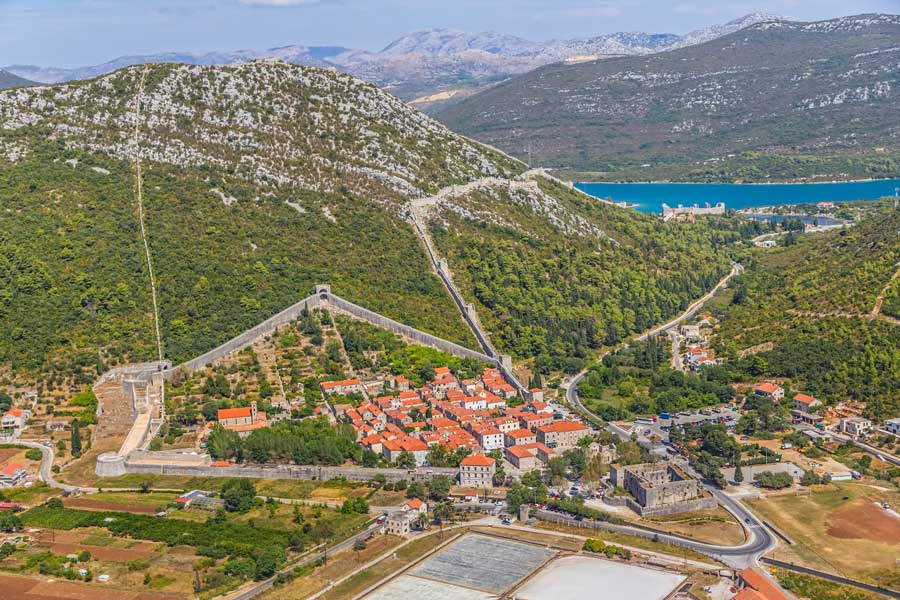
- The Walls of Ston are a series of defensive stone walls, originally more than 7 kilometers (4.3 mi) long, that surrounded and protected the city of Ston, in Dalmatia, part of the Republic of Ragusa, in what is now southern Croatia. The Walls of Ston were known as the “European wall of China”.
- Despite being well protected by massive city walls, the Republic of Ragusa used Pelješac to build another line of defense. At its narrowest point, just before it joins the mainland, a wall was built from Ston to Mali Ston. Throughout the era of the Republic, the walls were maintained and renovated once they meant to protect the precious salt pans that contributed to Dubrovnik’s wealth, which are still being worked today.
- Demolition work began on the walls following the fall of the Republic. Later the Austrian authorities took materials away from the wall to build schools and community buildings, and also for a triumphal arch on the occasion of the visit by the Austrian Emperor in 1884. The wall around Mali Ston was demolished with the excuse that it was damaging the health of the people. The demolition was halted after World War II.
- The wall, today 5.5-kilometer long wall links Ston to Mali Ston and is in the shape of an irregular pentangle. It was completed in the 15th century, along with its 40 towers (20 of which have survived) and 5 fortresses. Within, three streets were laid from north to south and three others from east to west. Thus, fifteen equal blocks were formed with 10 houses in each. Residential buildings around the edges. The Gothic Republic Chancellery and the Bishop’s Palace are outstanding among the public buildings.
- The main streets are 6 m wide (except the southern street which is 8 m wide) and the side streets are 2 m wide. The town was entered by two city gates: the Field Gate (Poljska vrata) has a Latin inscription and dates from 1506. The centers of the system are the fortress Veliki kaštio in Ston, Koruna in Mali Ston and the fortress on Podzvizd hill (224 m). The noted artist who works on the walls project is Michelozzo, Bernardino Gatti of Parma and Giorgio da Sebenico (Juraj Dalmatinac). The city plan of Dubrovnik was used as a model for Ston, but since Ston was built on prepared terrain, that model was more closely followed than Dubrovnik itself. In terms of infrastructure like water mains and sewers built in 1581, Ston was remarkably unique in Europe.
Itinerary:
- Breakfast at the hotel and check out.
- Meet your driver and head towards Ston on Pelješac peninsula.
- Admire the little village of Ston, famous for its magnificent city walls fortification complex dating back to the 14th century.
- Take a walk on the part of Ston village 7-kilometer-long wall.
- Next is a spectacular gourmet tour where you will have a chance to learn about the production of these world famous delicacies. Your host will take you on a boat ride to his oyster farm on the sea where you will get a chance to learn about oyster production. Taste the oysters fresh out of the sea or try to open one on the spot. Drizzle a little lemon juice on them and have a taste of the sea.
- The tour will be rounded up with a great seafood lunch.
- After the tour, continue towards Drvenik, where you will embark ferry transfer to Sućuraj on the Island of Hvar.
- Ferry transfer Drvenik – Sućuraj
- Upon arrival to Sućuraj, continue to Hvar town.
- Check in at the hotel and enjoy time at leisure.
- Meet your driver and head for an unforgettable dinner at a traditional “konoba” in the abandoned medieval village, two miles inland from the town Milna. This beautiful restaurant, very quaint and peaceful, offers a stunning view of the limestone cliffs. Hear the story of the village, its history and why it got abandoned while eating some of the best local dishes on the island.
- Accommodation in a 4* hotel in Hvar, BB Basis
Day 4 – September 24 Hvar

- The lavender island that Conde Nast’s signature travel magazine called “one of the “best 10 islands in the world”. A vacation on the lavender island of Hvar means extraordinary experiences every day – from visiting an ancient olive grove and learning about what Homer called “liquid gold”, taking a ride to discover hidden inland Hvar to exploring a castle, visiting the oldest theatre in Europe or tasting spectacular wine and local delicacies at an award-winning vineyard.
- St.Stephen’s Square – The center of town is this rectangular square, which was formed by filling in an inlet that once stretched out from the bay. At 4500 sq meters, it’s one of the largest old squares in Dalmatia. The town first developed in the 13th century to the north of the square and later spread south in the 15th century. Notice the well at the square’s northern end, which was built in 1520 and has a wrought-iron grill dating from 1780.
- Cathedral of St Stephen – The cathedral forms a stunning backdrop to the square. The bell tower rises four levels, each more elaborate than the last. The cathedral was built in the 16th and 17th centuries at the height of the Dalmatian Renaissance on the site of a cathedral destroyed by the Turks. Parts of the older cathedral are visible in the nave and in the carved 15thcentury choir stalls.
- Renaissance Theater – Built in 1612, this theatre is reportedly the first theatre in Europe open to plebeians and aristocrats alike. It remained a regional cultural center throughout the centuries. Plays were still staged here right up until 2008. Although much of the theatre is still under renovation, you can wander around the atmospheric interior and take in the faded frescoes and baroque loggias.
- Franciscan Monastery & Museum – This 15th-century monastery overlooks a shady cove. The elegant bell tower was built in the 16th century by a well-known family of stonemasons from Korčula. The Renaissance cloister leads to a refectory containing lace, coins, nautical charts and valuable documents, such as an edition of Ptolemy’s Atlas, printed in 1524.
- Your eye will immediately be struck by The Last Supper, an 8m by 2.5m work by the Venetian Matteo Ingoli dating from the end of the 16th century. The cypress in the cloister garden is said to be more than 300 years old. The adjoining church, named Our Lady of Charity, contains more fine paintings such as the three polyptychs created by Francesco da Santacroce in 1583, which represent the summit of this painter’s work.
- Fortica – Through the network of tiny streets northwest of St Stephen’s Square, climb up through a park to the citadel built on the site of a medieval castle to defend the town from the Turks. The Venetians strengthened it in 1557 and then the Austrians renovated it in the 19th century by adding barracks. Inside is a tiny collection of ancient amphorae recovered from the seabed. The view over the harbor is magnificent, and there’s a lovely cafe at the top.
- Arsenal – On the southern side of St Stephen’s Square, the Arsenal was built in 1611 to replace a building destroyed by the Ottomans. Mentioned in Venetian documents as ‘the most beautiful and the most useful building in the whole of Dalmatia’, the Arsenal once served as a repair and refitting station for war galleons.
Itinerary:
- Breakfast at the hotel.
- Morning at leisure or you can choose an optional (not included) early morning privately guided walking tour of Hvar.
- Discover the historical legacy of Hvar step by step and listen to the stories of the town’s citadel, its medieval walls, the monasteries and palaces. As we stroll through Hvar’s picturesque streets you’ll come to know centuries of Dalmatian architecture.
- Hvar gained glory and power during middle ages being an important port within the Venetian, naval empire. The center of the old part of the town was formed in the 15th century. On the northern slope above the square, within the town ramparts are partly preserved palaces of the Hvar aristocracy. Today Hvar is an important tourist resort with a centuries-old tradition in tourism.
- The group will take a taxi boat and spend the rest of the day on the famous Palmizana beach. Palmizana beach is located in a beautiful bay, at the back of which there is a pine tree forest which will offer the much-needed shade during hot summer days. The beach is covered with pebbles and has rocky parts as well, but the sea entrance is sandy. The beach contains a food and beverage store, bars and top restaurants where you can enjoy fish specialties prepared of numerous type of fish, crabs, and shells, as well as homemade vegetables. Palmizana beach can be reached by a taxi boat which sails from the island of Hvar. The sail lasts around 15 minutes.
- Meet your driver and transfer to a local winery for wine tasting.
- Taste Croatia’s first and only wines that won the Paris World Wine Contest and the Decanter World Wine Awards in London! Our Taste of Hvar, the island of wine tour introduces you to two of Croatia’s most distinguished winemakers, including wine tastings.
- After wine tasting, transfer back to Hvar.
- Time at leisure and overnight.
- Accommodation in a 4* hotel in Hvar, BB Basis
Day 5 – September 25 Hvar – Stari Grad – Split
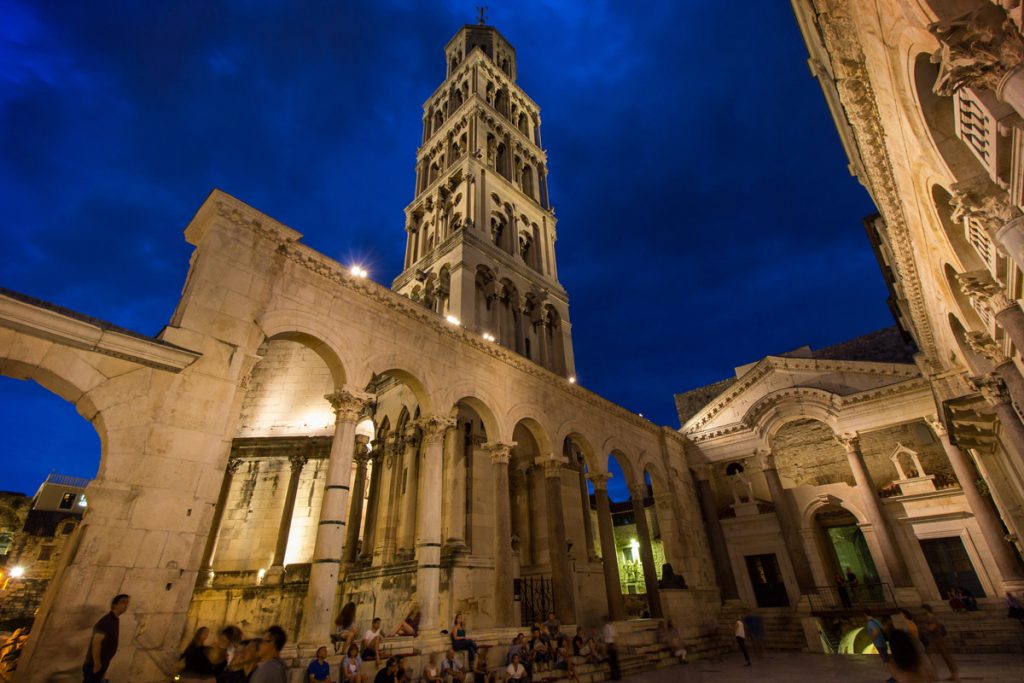
- Olives, indigenous aromatic plant the brilliancy of white stone against the verdant vegetation and the towering mountain massif of Biokovo whose spurs reach all the way to the sea – yes, this is indeed an exceptional part of the country, and its beauty is made all the more enchanting by numerous historic events and monuments. When, in the year 305, the Roman Emperor Diocletian, who ruled the entire world at that time, decided to build his leisure time abode – in which he intended to spend the rest of his life – he had no doubt as to exactly where build to it. In the very heart of Dalmatia, in the bay of Aspalathos (Split), well protected from the sea by the islands of the Split archipelago, and defended on its landward side by high mountains, Diocletian created a special point on the map of the Adriatic: the future city of Split.
- There’s no doubtDiocletian’s Palace is the top must-see attraction in Croatia’s second biggest city –Split. This UNESCO protected World Heritage Site is actually the heart of the whole city – almost two thousand years old, the enormous palace exists today as a ”living monument” – meaning it’s dotted with quaint shops, galleries, cafes, restaurants and people actually live and work within its old walls. And that’s what makes it really special – it’s an ancient Roman palace absolutely integrated into the everyday life and doings of Split and its people.
- The Riva, a marble-white and palm-lined connection of Split and the Adriatic is everyone’s favorite spot for socializing, coffee-drinking or just idle sitting on one of the comfy benches which face the sea. Riva is full of life throughout the day, especially during the summer, and you’ll always find people strolling along or sitting in one of the cafes. So, if you want to get a feeling of the local every day “buzz” be sure to grab your spot and you’ll soon experience first hand how important and irresistible is the coffee culture in Croatia.
- Marjan hill, often referred to as the ”green lungs of the city”, is a big forest park located close to the city center and fully equipped with walking, hiking and jogging trails. It’s a great choice for everyone who prefers less-crowded, wild beaches
- and thick pine tree shade. Moreover, if you’re looking for a picture-taking paradise, Marjan is your place! It offers stunning views of both Split and the surrounding islands. Marjan also hides some interesting historical sights such as old Jewish cemetery and 15th-century monasteries which are actually built into the hill.
- And finally, maybe not the most important but certainly the yummiest must-do activity of all – food!
 Split, especially its Old Town, is literally dotted with colorful food stalls, konoba (a type of traditional Dalmatian tavern) and quaint little restaurants. Don’t miss local delicacies, such as fish prepared na gradele and pašticada. Street food culture in Split is also pretty strong and you can never go hungry since there’s always some inviting bite-sized treat waiting for you around the corner.
Split, especially its Old Town, is literally dotted with colorful food stalls, konoba (a type of traditional Dalmatian tavern) and quaint little restaurants. Don’t miss local delicacies, such as fish prepared na gradele and pašticada. Street food culture in Split is also pretty strong and you can never go hungry since there’s always some inviting bite-sized treat waiting for you around the corner.
Itinerary:
- Breakfast at the hotel and check out.
- Head towards the pier Stari grad where you will embark a ferry to Split.
- Upon arrival, head towards your hotel. Check-in and time at leisure.
- Meet your guide and head for a food and cultural walking tour.
- There’s no doubt Diocletian’s Palace is the top must-see attraction in Croatia’s second biggest city –Split. This UNESCO protected World Heritage Site is actually the heart of the whole city – almost two thousand years old, the enormous palace exists today as a “living monument” – meaning it’s dotted with quaint shops, galleries, cafes, restaurants, and people actually live and work within its old walls. And that’s what makes it really special – it’s an ancient Roman palace absolutely integrated into the everyday life and doings of Split and its people.
- And finally, maybe not the most important but certainly the yummiest must-do activity of all – food! Split, especially its Old Town, is literally dotted with colorful food stalls, konoba (a type of traditional Dalmatian tavern) and quaint little restaurants. Don’t miss local delicacies, such as fish prepared na gradele and pašticada. Street food culture in Split is also pretty strong and you can never go hungry since there’s always some inviting bite-sized treat waiting for you around the corner.
- Overnight.
- Accommodation in a 4* hotel in Split, BB Basis
Day 6 – September 26 Split – Omis – Split

- Omis is a small town and harbor in Central Dalmatian located between Split and Makarska, situated in the mouth of the Cetina river and surrounded by massive gorges. In the past, Omis was notorious because of the pirates of Omis whose ships were a centuries-long symbol of retaliation, courage, and strength. The evidence of proud and turbulent Omis history can be found on every corner of the Omis Riviera. Omis churches and Omis fortresses are silent stone reminders of the power and the might of infamous Omis pirates. Today,
- Omis is one of the most beautiful places of Croatia’s Adriatic Coast. Thousands of years the Cetina River has been flowing persistently through the canyon, creating magical shapes in its bed. Crystal clear and pleasant for swimming, Cetina River today represents the genuine experience of the intact nature with its 180 meters high cliffs, wild rapids, basins, lakes and subterranean tunnels.
Itinerary:
- Breakfast at the hotel.
- Meet your driver and head towards to small town of Omiš.
- Upon arrival, meet your guide and start a private guided walking tour of Omiš.
- The evidence of a proud and turbulent Omis history can be found on every corner of the Omis Riviera. In the ancient town of Omis, Omis churches and Omis fortresses are silent stone reminders of the power and the might of famous Omis corsairs.
- The oldest artifacts that mention Omis date back to Greek and Roman times. During the Middle Ages Omis was infamous for its corsairs (pirates) whose ships brought fame to them because they were built for attack and fast return into the mouth of the Cetina River, protecting the town from foreign invasion. At a very early date, neighbors of the Corsairs of Omis, the Highlanders of the Poljica Principality, became their allies, enabling them to harass the sea trade without fear of a sudden attack by land.
- After the tour, embark a boat and head for half hour drive on Cetina river.
- Find your peace in the rhythmic thumping of waves, traveling upstream in the shade of cragged mountains and century-old trees, listening to the rustling of endless reed. Rest your eyes watching the beautiful crystal-clear water – a home to numerous fish, coots, and wild ducks. Make sure to make some photos or video footage now and then; while you will certainly remember this experience, your less fortunate friends will have to depend on them before they see it for themselves.
- Upon arrival to Radmanove Mlinice head for delicious lunch.
- Enjoy traditional food from the Cetina River (frogs, eels…) and traditional Croatian meat dish “peka” (meal baked under iron bell for several hours before served). Homemade bread is offered daily.
- After lunch, meet your driver and head back to Split.
- Upon arrival, time at leisure.
- Accommodation in a 4* hotel in Split, BB Basis
Day 7 – September 27 Split – Plitvice Lakes National Park

- Plitvice Lakes National Park is Croatia’s best known national park and the only one of eight that is listed on the UNESCO List of World Heritage sites. The main attractions of this park, are the 16 small lakes joined by waterfalls created by the sedimentation of travertine, a special type of limestone. This national park encompasses the source of the river Korana, located in the area surrounded by dense forests of beech, fir, and spruce. There are also several caves in the park, as well as springs and flowering meadows.
- The brown bear stands out as one of many protected animal species. The popularity of this park is also boosted by the special means of transport used to ferry visitors around: the panoramic electric trains and the noiseless electro-powered boats. Through a network of paths, visitors can get around and access the numerous waterfalls and the rocky lake shores easily.
Itinerary:
- Breakfast at the hotel and check out.
- Meet your driver and head for a truly amazing and spectacular stop – the Plitvice Lakes National Park, 3 h ride away through the picturesque and mountainous Gorski Kotar region.
- Upon arrival, meet your guide and head for a private guided walking tour of Plitvice lakes.
- The first Croatian national park and a UNESCO World Heritage site, Plitvice lakes offer its visitors a blend of vivid colors, sounds and smells that are spectacular and memorable. Its 16 cascading lakes and numerous waterfalls make up one of the greatest wonders of the world. Embraced by high wooden mountains and fed by many small rivers, the lakes are a mesmerizing view of green and blue accompanied by the thundering sounds of the many waterfalls that connect the lakes to create a true paradise on Earth.
- After the tour, transfer to your hotel.
- Check-in and time at leisure.
- We highly recommend lunch at a local restaurant in Plitvice lakes. A unique place with an ambiance of a traditional house in Lika, in which authentic dishes are prepared. In the middle of the restaurant, there is an open-hearth fireplace, where lamb is roasted on a spit, and where other food specialties from Lika are prepared “under iron cover”.
- Accommodation in a 4* hotel in Plitvice Lakes area, BB Basis
Day 8 – September 28 Plitvice Lakes National Park – Zagreb
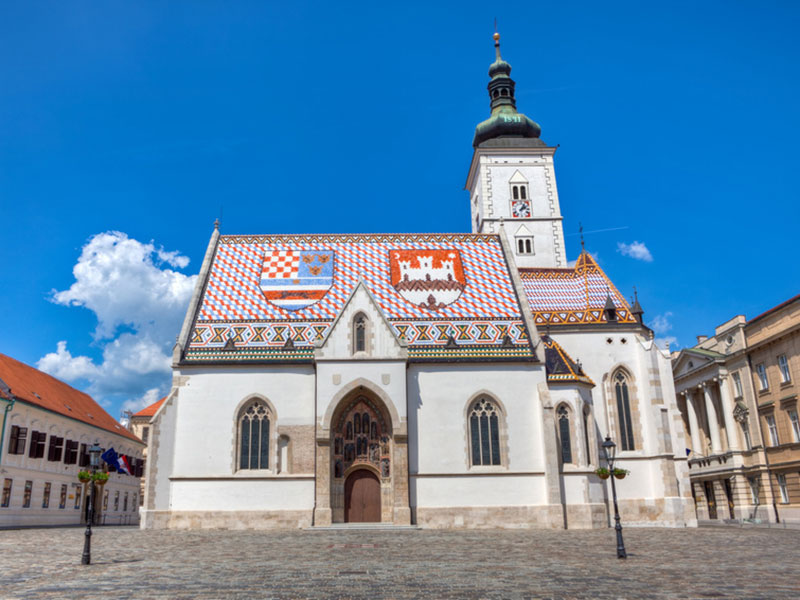
- Unveil the secrets behind the old facades, discover the hidden courtyards and revive the stories from the past. We’ll give you a completely new perspective of the Zagreb City. Walking tour of Zagreb starts with the main square Ban Jelačić, Cathedral, Tkalčićeva street, the Stone Gate, Upper Town, the historical center of the city, St. Mark’s Church with the famed multi-colored roof. Using funicular, close to the Lotrščak Tower, you can go down to the Lower town to see a part of famous Ilica street, the Croatian National Theatre, University and more
- The Cathedral of the Assumption dominates Kaptol, its glowing towers you see off in the distance is the most immediately recognizable and commanding feature in town. It is an ornate and impressive wonder of neo-Gothic artistry. The cathedral was founded in 1093, heavily damaged in 1242 after various sieges by the Tartars, then again in 1625 after a wave of fires. But the bad luck goes on, in 1880 it was seriously damaged during an earthquake. In 1990 exterior renovations set in motion to battle against the wearing effects of time. Just up from the main square (Trg bana J. Jelacica) by the stairs, you will find the colorful Dolac market. To the back of the market square, there are the touristy stalls which sell souvenirs. But actually, the market itself is for the locals to buy fresh produce. Downstairs you will find the meat etc. sections.
- St.Mark’s Church – In the highest area of historic Zagreb this church is characterized by its roof with red, blue and white representing the coat of arms of Zagreb. The building was constructed by Venetian masters, even the baroque bell tower is an addition to the seventeenth century. Inside there are Gothic vaults and a choir designed by Ivan Mestrovic. The square where it is situated is a symbol of political life because here are the locations of the Sabor (Parliament), neoclassical building, and the Croatian government.
- Stone Gate – Only one of the city’s four gates, the eastern one, has been preserved and this leads to the Gradec neighborhood. Apart from being practical, it’s also surrounded by a legend which is very important to Zagreb’s citizens who are very devout. According to this legend, the great fire of 1731 destroyed nearly all of the wooden door except for a painting of the Virgin and Child by an unknown 17th-century artist. People thought that it was a magical or a miraculous painting and since then, they have come to the site to pray and make offerings. On the inside of the doors on the wall, they have used the space as a chapel with benches for the people to pray before the image locked behind iron bars and surrounded by candles and flowers.
- Lower Town -Parks – Maksimir Park & Zagreb Zoo – the biggest park in Zagreb. Great place to chill out, drink coffee, eat lunch (picnic or at the park’s restaurant) or take nice long walks through the forest or by the small lakes. Good for joggers, cyclists, also child and dog-friendly. Offers lake rowing. The 85-year old Zoo now also has red pandas and a variety of animals.
- Other city parks are connected in the “Lenuci Horseshoe”, an unfinished project of combining small green squares and parks at the core of the center of the town.
- Zrinjevac Park, (just south-east of the main square). the park of the Academy (connecting the Zrinjevac and Tomislav parks). King Tomislav square, (south of Zrinjevac, just outside the main Train Station). Botanical Gardens, (south of the K. Tomislav Square, near the Hotel Esplanade). Mažuranić square. Square of Maršal Tito, (the green square surrounding the National Theatre).
Itinerary:
- Breakfast at the hotel and check out.
- Meet your driver and head for a 2h drive to Zagreb.
- Upon arrival, check in at your hotel, time at leisure.
- Afterward, meet your guide at the hotel lobby and head for a private tour of the capital of Croatia.
- On this tour, you will have a chance to really get to know Zagreb walking through the Upper and Lower town while our experienced guide will complete the whole picture of Zagreb with the stories and the history of this more than 900-year old town. Walk through the streets and visit sites like the Stone Gate, St. Catherine`s Church (one of the most beautiful sacral baroque edifices in Zagreb), the Museum of Broken Relationships, the Lotrscak Tower signalizing high noon to Zagreb citizens with the cannon shot every day and St. Mark’s Square with Houses of Parliament and Government and St. Mark’s Church with its picturesque roof.
- Visit the Museum of Broken Relationships on your own. It is Zagreb’s quirkiest museum. Explore mementos that remain after a relationship ends. The innovative exhibit toured the world until it settled here in its permanent home. On display are donations from around the globe, in a string of all-white rooms with vaulted ceilings and epoxy-resin floors. Exhibits hit on a range of emotions, from a vinyl record that was played during a teenage breakup forty years ago to a stun gun that never got to be used. Check out the lovely adjacent store – the ‘bad memories eraser’ is a bestseller – and the cozy cafe with sidewalk tables.
- Later, have time at leisure to further discover Zagreb on your own.
- Go to a local restaurant and try Zagorski štrukli – a unique traditional Croatian dish served in most households across Hrvatsko Zagorje and Zagreb. It is made from special dough and fresh cow cheese. There are two types of štrukli, one is called kuhani štrukli meaning boiled štrukli, and the other is called pečeni štrukli meaning baked štrukli.
- Don’t miss having a stroll through the famous Lower town park Zrinjevac. The construction of the charming park has been a turning point in Zagreb’s urban development. The park is enlisted as a monument of landscape architecture due to its design that has been preserved for over a century.
- Accommodation in a 4* hotel in Zagreb, BB Basis
Day 9 – September 29 Zagreb
Itinerary:
- Breakfast at hotel and check out.
- Private transfer to Zagreb airport for outbound flight for the USA.
- End of service.
END Autumn in Croatia, and a safe journey home!
Autumn in Croatia, September 21 – 29, 2019, based on 6- 12 people, package includes:
- VAT TAX INCLUDED
- 24hr concierge and in Croatia assistance
- English speaking tour leader throughout
- Private transfer from Dubrovnik airport to Dubrovnik hotel in a modern air-conditioned car (1 car transfer per couple)
- 2 nights’ accommodation at Hotel 5* in Dubrovnik, BB basis
- Private transfer from Dubrovnik hotel to Pile gate (Old Town) in a modern air-conditioned minivan
- Private English speaking guide in Dubrovnik (tickets to the sights not included)
- Cable car ride to Mt Srđ
- Private transfer from Pile gate (Old Town) – Local restaurant – Hotel in a modern air-conditioned minivan
- Dinner at traditional “konoba” restaurant
- Private transfer Dubrovnik – Pelješac peninsula – Ston – Drvenik – Sućuraj – Hvar in a modern, air-conditioned minivan
- Ston walls
- Ston oysters experience (NOTE: Possibility of the boat ride depends on the weather condition)
- Seafood lunch
- Ferry Drvenik – Sućuraj
- Private transfer Hvar – Malo Grablje – Hvar
- Dinner at traditional “konoba” restaurant in a modern, air-conditioned minivan
- 2 nights’ accommodation at Hotel 4* in Hvar, BB basis
- Private transfer and wine tasting at two local wineries
- Private transfer Hvar hotel – Stari grad pier in a modern, air-conditioned minivan
- Ferry tickets Stari grad – Split
- Private food and cultural walking tour of Split (tickets to the sites not included) – approx. 5 hours
- Included: English speaking tour guide, 5 stops (1st stop – prosciutto & cheese and bread, 2nd stop – olive oil tasting, 3rd stop – a starter dish, 4th stop – entrée dish, rakija tasting – 3 different rakija)
- 2 nights’ accommodation at Hotel 4* in Hvar, BB basis
- Private transfer Split – Omiš – Split in a modern, air-conditioned minivan
- Omiš guide (up to 1 hours) – tickets to the sites not included
- Panoramic boat ride
- Lunch at local restaurant
- Private transfer Split – Plitvice lakes in a modern, air-conditioned minivan
- Private English speaking guide in National Park Plitvice lakes
- Plitvice Lakes National Park entrance tickets
- 1-night accommodation at Hotel 4* in Rakovica, BB basis
- Private transfer Plitvice lakes – Zagreb in a modern, air-conditioned minivan
- Private English speaking guide in Zagreb
- Entrance tickets for Museum of Broken Relationships
- 1-night accommodation at Hotel 4* in Zagreb, BB basis
- Private transfer to Zagreb airport in a modern, air-conditioned car
Optional (not included in the package price):
- Group sea kayaking tour (Included one-way transfer hotel – Pile gate)
- Private guided walking tour of Hvar (tickets to the sites not included)
Program does not include:
- Meals and drinks not mentioned above
- Airfare, Travel Insurance
- Additional excursions and/or services not mentioned in the program
- Personal expenses (internet, telephone, mini bar etc.)
- Tips and porterage services
Dates and Details:
- Prices are based on the number of passengers traveling and dates of travel
- Hotels and services as listed are not guaranteed until confirmed
Are you interested in joining the group? Or do you have any questions on this exciting Croatia experience? Feel free to fill out the form (click this link) and we’ll follow up with more details. Otherwise, feel free to comment in the message section below in the blog. Hope to see you in Croatia with us!





Split, especially its Old Town, is literally dotted with colorful food stalls, konoba (a type of traditional Dalmatian tavern) and quaint little restaurants. Don’t miss local delicacies, such as fish prepared na gradele and pašticada. Street food culture in Split is also pretty strong and you can never go hungry since there’s always some inviting bite-sized treat waiting for you around the corner.




